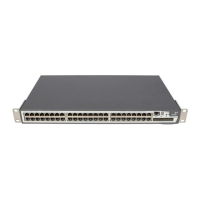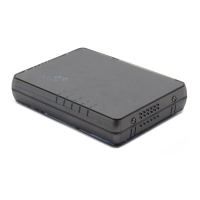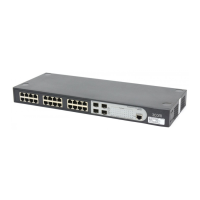210 CHAPTER 6: USING ROUTING PROTOCOL COMMANDS
Description
Use the ospf network-type command to configure the network type of OSPF
interface.
Use the undo ospf network-type command to restore the default network type
of the OSPF interface.
OSPF divides networks into four types by link layer protocol:
■ Broadcast: If Ethernet or FDDI is adopted, OSPF defaults the network type to
broadcast.
■ Non-Broadcast Muli-access (nbma): If Frame Relay, ATM, HDLC or X.25 is
adopted, OSPF defaults the network type to NBMA.
■ Point-to-Multipoint (p2mp): OSPF will not default the network type of any link
layer protocol to p2mp. The general undertaking is to change a partially
connected NBMA network to p2mp network if the NBMA network is not
fully-meshed.
■ Point-to-point (p2p): If PPP, LAPB or POS is adopted, OSPF defaults the network
type to p2p.
NBMA means that a network is non-broadcast and multi-accessible. ATM is a
typical example. A user can configure the polling interval to specify the interval of
sending polling hello packets before the adjacency of the neighboring routers is
formed.
Configure the interface type to nonbroadcast on a broadcast network without
multi-access capability.
Configure the interface type to p2mp if not all the routers are directly accessible
on an NBMA network.
Change the interface type to p2p if the router has only one peer on the NBMA
network.
When the network type of an interface is NBMA or it is changed to NBMA
manually, the peer command must be used to configure the neighboring point.
Related command: ospf dr-priority.
Example
Set the interface Vlan-interface 1 to NBMA type.
<SW5500>system-view
System View: return to User View with Ctrl+Z.
[SW5500]interface Vlan-interface 1
[SW5500-Vlan-interface1]ospf network-type nbma
ospf timer dead Syntax
ospf timer dead
seconds
undo ospf timer dead
View
VLAN Interface View

